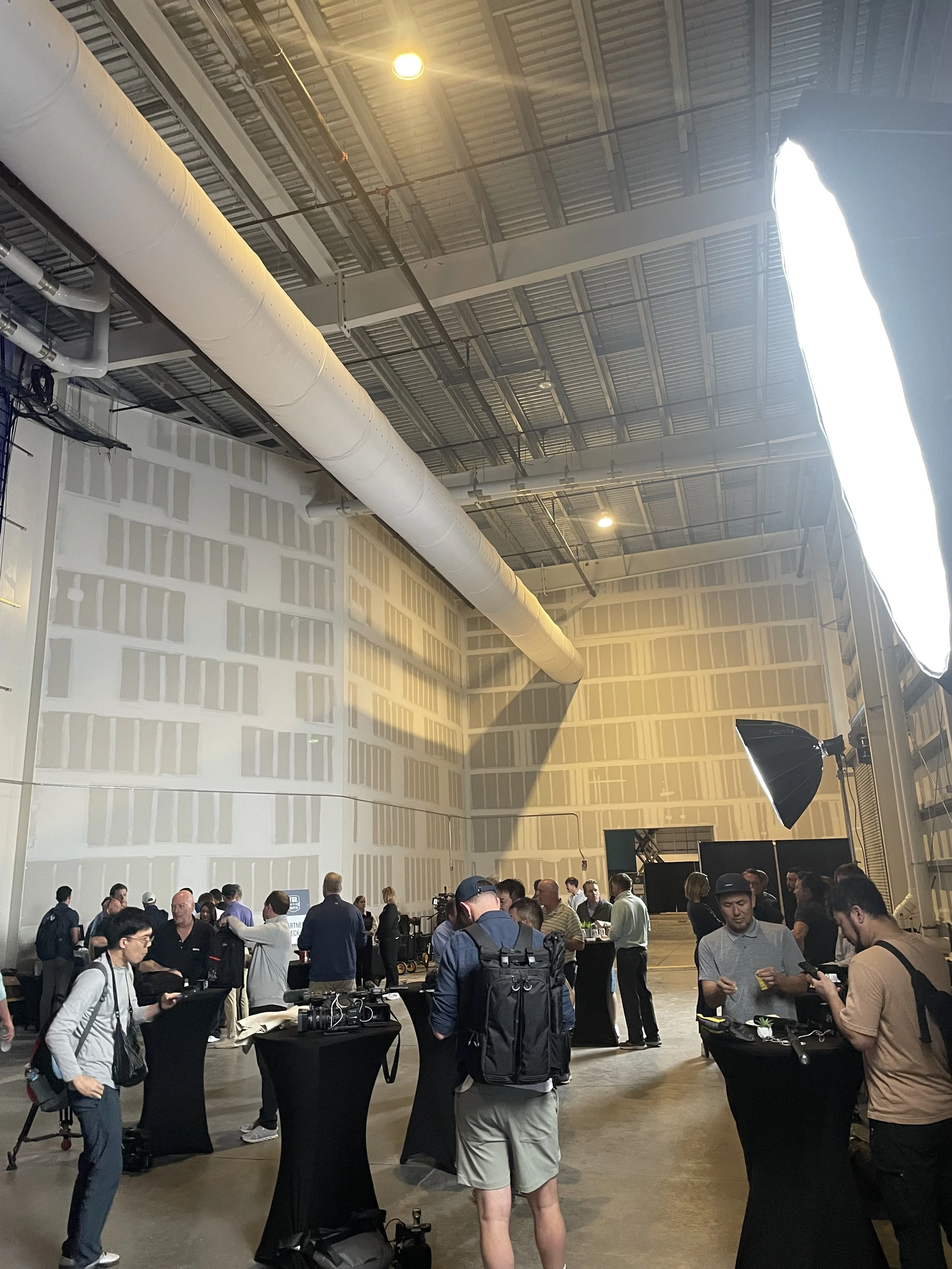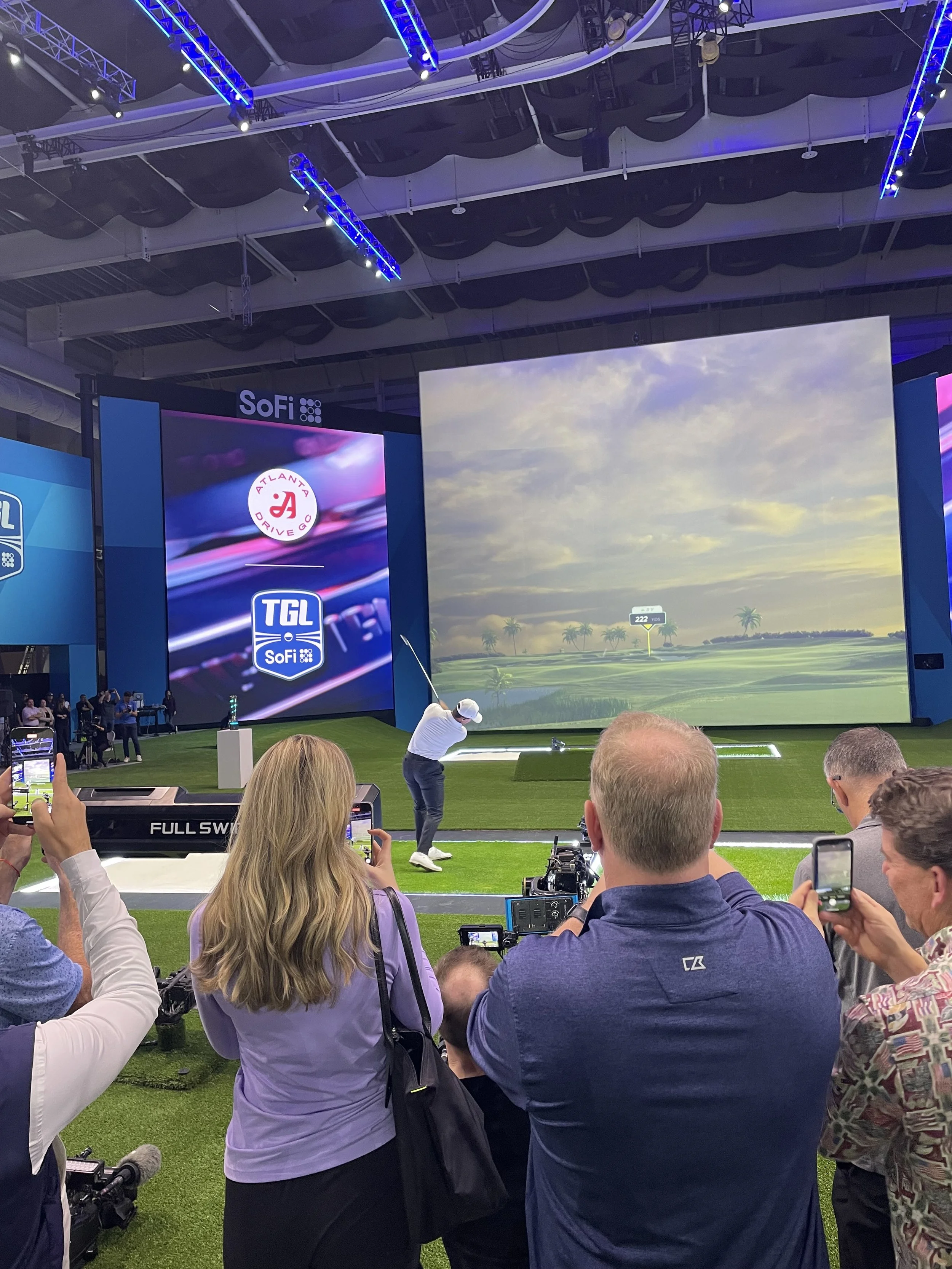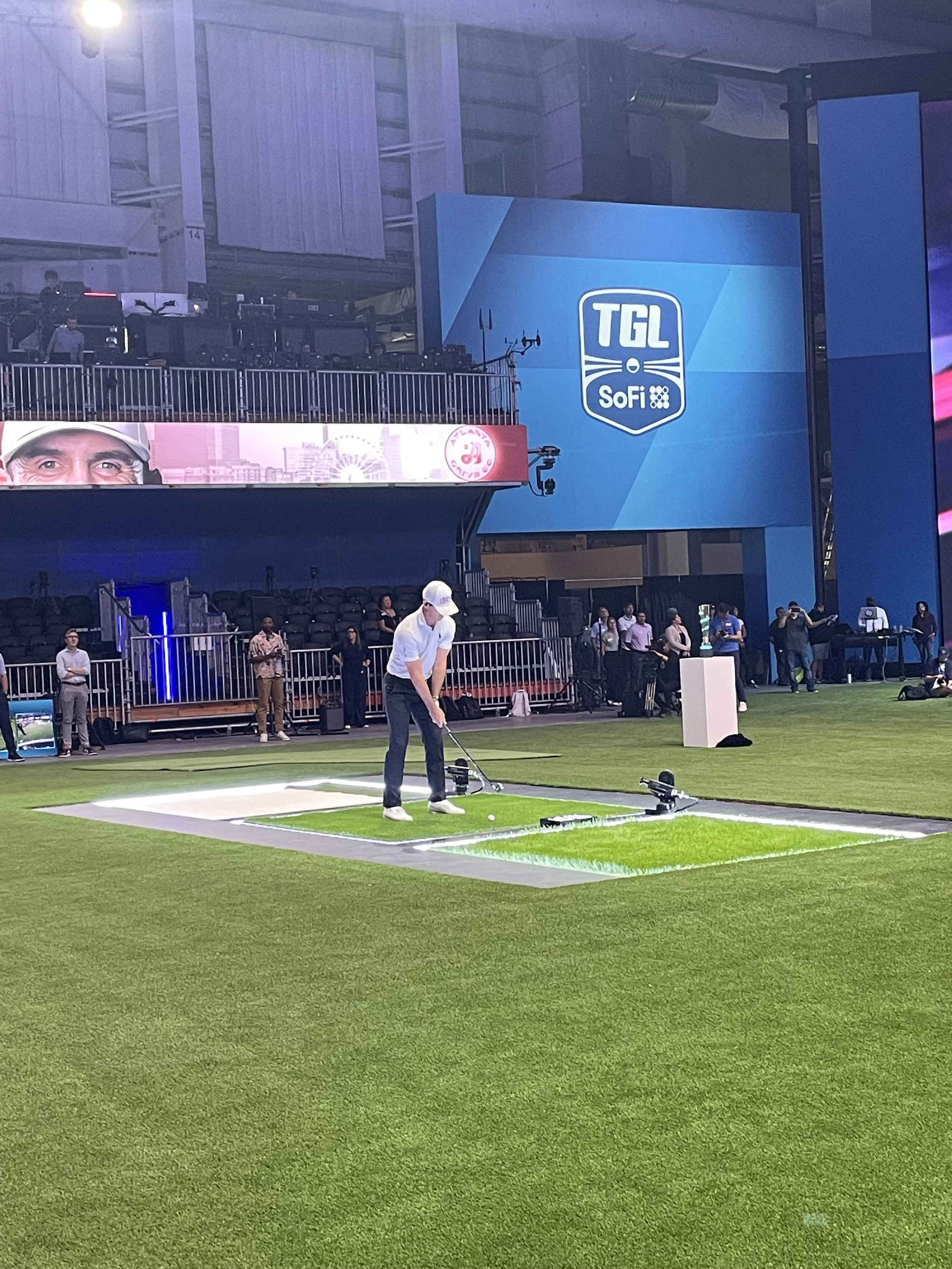TGL Media Day
First two takeaways from the SoFi Center: it’s impressive, and it’s not finished.
TGL, the tech-infused indoor golf league spearheaded by Tiger Woods and Rory McIlroy, opened the doors to their new facility this week with a media day. I’ve written about TGL in this space, but this was my first chance to see it in person.
Media Day speakers included TGL co-founder Mike McCarley — my former boss at Golf Channel — plus TGL players Wyndham Clark, Rickie Fowler, and Billy Horschel. ESPN’s Matt Barrie hosted the program with the players, McCarley, SoFi CEO Anthony Noto, and TMRW Sports Group Chief Technical Officer Andrew Macaulay, who joined TGL’s parent company after serving in a similar role with Topgolf. I mention Macaulay because he had arguably the toughest job of the day — explaining the technology behind the arena itself.
Let’s start with the building. The original plan was something akin to the Carrier Dome (now the JMA Wireless Dome) at Syracuse University — an air-supported heavy-duty canvas roof with enough clearance to allow full golf shots. In November of 2023, with only two months until its scheduled opening, a power outage caused the dome to collapse on a night in South Florida when winds gusted over 30 mph, causing a near-total loss. TGL scrapped its planned January 2024 debut and went back to the drawing board, opting to construct something more permanent. The result is a 250,000-square-foot brick-and-mortar arena with seating for 1500 spectators.
The reimagined SoFi Center is located on the same original footprint, off RCA Boulevard on the campus of Palm Beach State College. It’s a quick hop off Interstate 95 and a few minutes from the PGA National resort. Construction is ongoing, leaving the external view rather nondescript — no exterior signage yet, just four white walls and a fleet of construction equipment and TV trucks in the parking lot. Landscapers were literally laying sod and planting trees as the media busses arrived, and many of the interior walls were still unpainted. The media entered through a loading dock area that resembles the back-of-house at every NBA arena I’ve ever worked in — high, exposed ceilings and unfinished concrete floors. Interior construction crews paused, briefly, to reduce the noise during the media program, but they didn’t stop working entirely. With the first match scheduled for January 7th, there’s no time to dawdle.
My Golf Channel buddy Steve Burkowski opined upon seeing the new building that the 2023 power outage may have been the best thing that ever happened to TGL, something that Mike McCarley confirmed when Steve and I cornered him at media day. McCarley pointed out that the revamped plans included a dedicated training and recovery area for the players, something that was not part of the original blueprint. The fitness area is hidden from public view and was not part of the tour, but McCarley says it’s world-class, which is easy to imagine.
The public interior space appears much larger in person than it does on camera. It’s nearly 100 yards long and 50 yards wide, anchored on one end by an adjustable short game area — more on that in a minute — and on the other end, the 3,400-square-foot simulator screen. Most simulators that you find at sports bars or golf superstores are 16 feet by 9 feet. The TGL screen is 64 feet by 53 feet, roughly the size of an IMAX movie. Numerous media members posed for photos at the base of the screen to illustrate its massive scope, as if taking a snapshot at the rim of the Grand Canyon.
There are teeing areas at 21 yards and 35 yards from the screen. Players move back and forth between hitting areas depending on how long their next shot has to be. Each teeing area has three hitting zones, with real grass and real sand. There’s a turf farm in the parking lot, so the sod can be changed out when needed. If you hit a tee shot into the “sand” on the simulator, you’re hitting out of real sand for your next shot, and the same goes for the rough. The sand has a crystal-quartz feel to it and is blindingly white. None of the speakers would say so directly, but there were strong suggestions that it’s the same stuff we see on TV every April at that invitational tournament up in Georgia.
TGL’s website has all the details on how the matches are played, so I’ll skip that part but add this — the players are invested. As of this writing, there have been around 25 test matches or “rehearsals” so far, with at least another 20 scheduled before January 7. It was clear from their comments that Fowler, Horschel, and Clark were not only geeked about the technology, but well-versed on how to tackle it. TGL players essentially have the keys to the gym and can practice at SoFi anytime they wish, something that was apparent when Fowler gave Horschel some advice on how the ball reacts when chipping off the artificial turf. Fowler, a South Florida resident, also had some insight into putting on the massive, movable green.
Let’s talk about that green. Three bunkers (with more of that real sand) surround a 41-yard-wide putting surface that can be adjusted for every hole in a match. The entire surface can rotate 360 degrees on a turntable, and the putting surface itself is flexible, thanks to over 600 “motorized actuators” under the felt. Basically, they can jack up one corner of the green while lowering another, adjusting the topography as needed (this was the part where listening to Andrew Macaulay became very important). If a player misses the green with his approach, an overhead projector calculates the exact spot where the ball came to rest in the short game area and paints a dot on the turf. From there, they play on. Each “hole” that appears on screen has been custom designed for TGL, and there are some Golden Tee-style doozies in the rotation.
The TV nerd in me noted the number and placement of cameras in the building. Cable-suspended Spidercams, bunker cameras, rail cameras (like those you’d see at the Olympics), overhead cameras, handhelds, Steadicams, rovers — there’s at least one of everything. LIV Golf uses around 70 cameras each week to capture 54 players on a full-sized golf course; TGL has around 65 cameras under one roof to follow two players who might walk all of 30 yards.
Random notes from the day: one member of the technical crew told me that Tiger has tested at the new building, under a great deal of secrecy. No photos or video allowed. Rickie Fowler astutely pointed out that Woods might be the biggest beneficiary of the virtual format, as he won’t have to walk 7,200 yards for four straight days. All he has to worry about is hitting shots, which Fowler assured us Tiger can still do.
Mike McCarley had some insight into the relationship with Palm Beach State College. The school has access to the SoFi Center, which could certainly be repurposed as an event venue, although, as McCarley told us, “they’re not really sure what to do with it yet.” The NJCAA school added a women’s golf program this year and is adding a men’s team in 2025, a direct result of TGL’s influence. Mike says that junior players from all over the country and around the world are now investigating PBSC as a potential college golf destination.
One more note on the players. Choosing Fowler, Horschel, and Clark as ambassadors for Media Day was no accident, as they are three gregarious and generous men. But beyond that, all three were legitimately excited about TGL. These guys live for competition, be it a weekly Nassau or a U.S. Open. Yes, this is a made-for-TV indoor league, but it’s still a contest, with winners and losers, and Tour players hate losing. Fowler and Horschel joked about skulling one out of the bunker and into the crowd, something that TGL and ESPN probably wouldn’t hate. Once the viewer gets a handle on the format and digests the technological explosion coming at them, it won’t be all that hard to follow. As McCarley said more than once, it’s still golf, albeit at a much quicker pace, and the players seem enthusiastic.
There are a couple of wrinkles that I am probably too old to appreciate. There’s an in-arena announcer who will call the players to the tee in a smoky WWE-style hero’s entrance. South Florida legend DJ Irie has been borrowed from his longtime gig with the Miami Heat to drop the beats. The hospitality areas haven’t been completed yet, but I’m sure there will be some Miami nightclub vibes. As I write these words, I realize that TGL’s in-arena experience borrows heavily from LIV, intentional or not. Regardless, I’ll watch.












